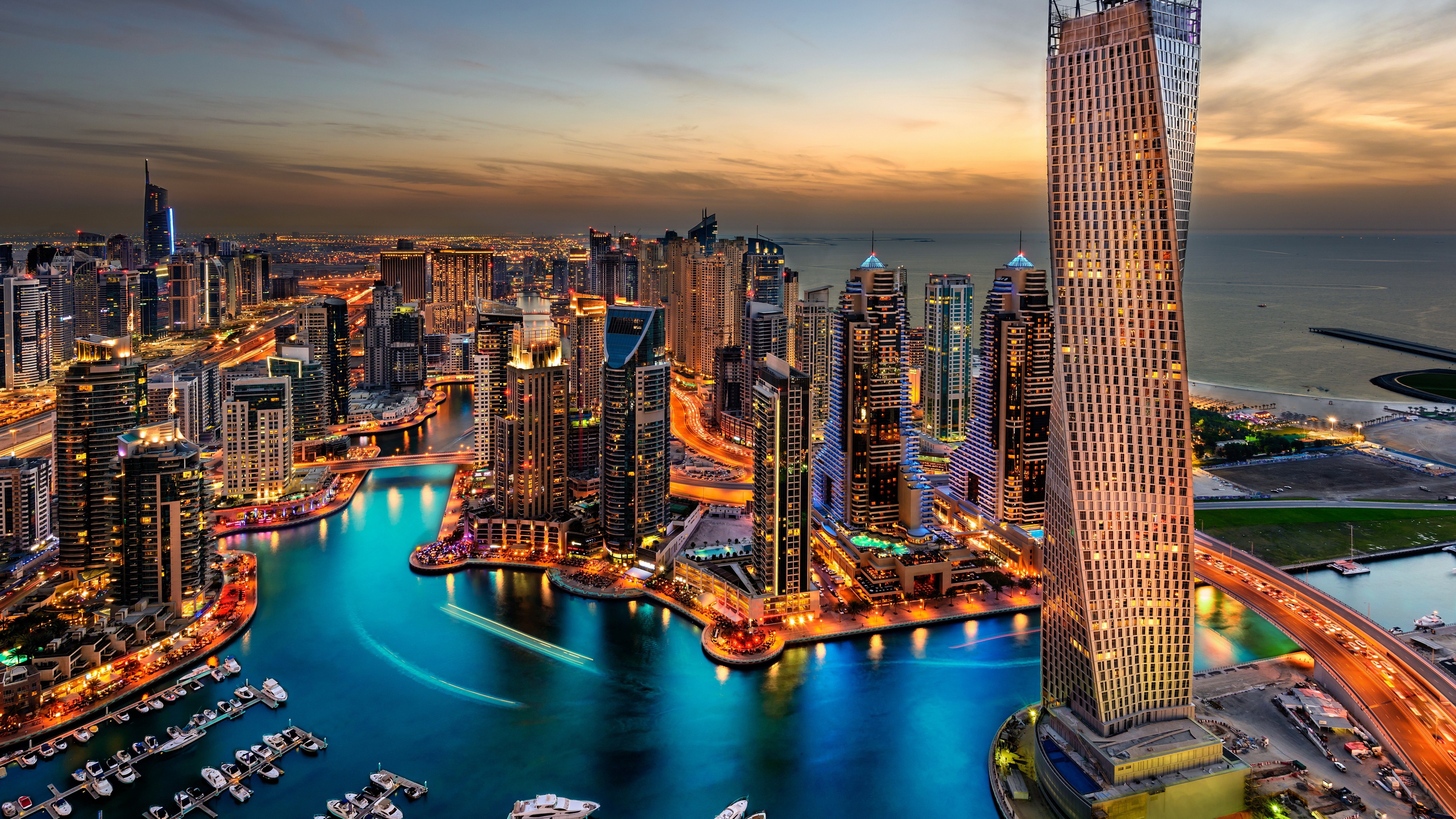We found 176 results that contain "buckets and objects not public"
Posted on: #iteachmsu
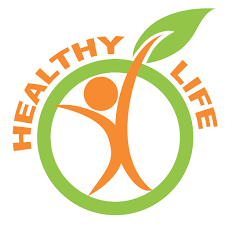

Public Playlist
It has survived not only five centuries, but also the leap into electronic typesetting, remaining essentially unchanged. It was popularised in the 1960s with the release of Letraset
Assessing Learning
Posted on: #iteachmsu


Travel and Photography and how it makes difference in someones life
So your friends got back from their annual jaunt abroad and you can contain your jealousy no more.
Or maybe you’re about to graduate, or have been let go from work.
Or maybe you’re about to graduate, or have been let go from work.
Pedagogical Design
Posted on: #iteachmsu
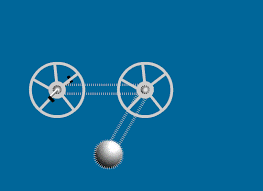

Science and technology
Science and technology is a topic that encompasses science, technology, and the interactions between the two. Science is a systematic enterprise that builds and organizes knowledge in the form of explanations and predictions about nature and the universe. Technology is the collection of techniques, methods or processes used in the production of goods or services or in the accomplishment of objectives, such as scientific investigation, or any other consumer demands.
Posted on: #iteachmsu


Social and Emotional Learning
This is a pathway about Social and Emotional Learning
PEDAGOGICAL DESIGN
Posted on: #iteachmsu

Triglycerides Triglycerides are fats and oils Fatty acid and glycerol molecules are the Edited
Triglycerides
Triglycerides are fats and oils
Fatty acid and glycerol molecules are the components that make up triglycerides
Fats and oils have a number of important functions in organisms: energy storage, insulation, buoyancy, and protection
Energy storage
The long hydrocarbon chains in triglycerides contain many carbon-hydrogen bonds with little oxygen (triglycerides are highly reduced)
So when triglycerides are oxidised during cellular respiration this causes these bonds to break releasing energy used to produce ATP
Triglycerides, therefore, store more energy per gram than carbohydrates and proteins (37kJ compared to 17kJ)
As triglycerides are hydrophobic they do not cause osmotic water uptake in cells so more can be stored
Plants store triglycerides, in the form of oils, in their seeds and fruits. If extracted from seeds and fruits these are generally liquid at room temperature due to the presence of double bonds which add kinks to the fatty acid chains altering their properties
Mammals store triglycerides as oil droplets in adipose tissue to help them survive when food is scarce (e.g. hibernating bears)
The oxidation of the carbon-hydrogen bonds releases large numbers of water molecules (metabolic water) during cellular respiration
Desert animals retain this water if there is no liquid water to drink
Bird and reptile embryos in their shells also use this water
Triglycerides are fats and oils
Fatty acid and glycerol molecules are the components that make up triglycerides
Fats and oils have a number of important functions in organisms: energy storage, insulation, buoyancy, and protection
Energy storage
The long hydrocarbon chains in triglycerides contain many carbon-hydrogen bonds with little oxygen (triglycerides are highly reduced)
So when triglycerides are oxidised during cellular respiration this causes these bonds to break releasing energy used to produce ATP
Triglycerides, therefore, store more energy per gram than carbohydrates and proteins (37kJ compared to 17kJ)
As triglycerides are hydrophobic they do not cause osmotic water uptake in cells so more can be stored
Plants store triglycerides, in the form of oils, in their seeds and fruits. If extracted from seeds and fruits these are generally liquid at room temperature due to the presence of double bonds which add kinks to the fatty acid chains altering their properties
Mammals store triglycerides as oil droplets in adipose tissue to help them survive when food is scarce (e.g. hibernating bears)
The oxidation of the carbon-hydrogen bonds releases large numbers of water molecules (metabolic water) during cellular respiration
Desert animals retain this water if there is no liquid water to drink
Bird and reptile embryos in their shells also use this water
NAVIGATING CONTEXT
Posted on: #iteachmsu

Monitoring and controlling
Embedded video URL
Posted by: Venturit Super Admin
Navigating Context
Posted on: #iteachmsu


Triglycerides Triglycerides are fats and oils Fatty acid and glycerol molecules are the Edited
Triglycerides
Triglycerides are fats and oils
Fatty acid and glycerol molecules are the components that make up triglycerides
Fats and oils have a number of important functions in organisms: energy storage, insulation, buoyancy, and protection
Energy storage
The long hydrocarbon chains in triglycerides contain many carbon-hydrogen bonds with little oxygen (triglycerides are highly reduced)
So when triglycerides are oxidised during cellular respiration this causes these bonds to break releasing energy used to produce ATP
Triglycerides, therefore, store more energy per gram than carbohydrates and proteins (37kJ compared to 17kJ)
As triglycerides are hydrophobic they do not cause osmotic water uptake in cells so more can be stored
Plants store triglycerides, in the form of oils, in their seeds and fruits. If extracted from seeds and fruits these are generally liquid at room temperature due to the presence of double bonds which add kinks to the fatty acid chains altering their properties
Mammals store triglycerides as oil droplets in adipose tissue to help them survive when food is scarce (e.g. hibernating bears)
The oxidation of the carbon-hydrogen bonds releases large numbers of water molecules (metabolic water) during cellular respiration
Desert animals retain this water if there is no liquid water to drink
Bird and reptile embryos in their shells also use this water
Triglycerides are fats and oils
Fatty acid and glycerol molecules are the components that make up triglycerides
Fats and oils have a number of important functions in organisms: energy storage, insulation, buoyancy, and protection
Energy storage
The long hydrocarbon chains in triglycerides contain many carbon-hydrogen bonds with little oxygen (triglycerides are highly reduced)
So when triglycerides are oxidised during cellular respiration this causes these bonds to break releasing energy used to produce ATP
Triglycerides, therefore, store more energy per gram than carbohydrates and proteins (37kJ compared to 17kJ)
As triglycerides are hydrophobic they do not cause osmotic water uptake in cells so more can be stored
Plants store triglycerides, in the form of oils, in their seeds and fruits. If extracted from seeds and fruits these are generally liquid at room temperature due to the presence of double bonds which add kinks to the fatty acid chains altering their properties
Mammals store triglycerides as oil droplets in adipose tissue to help them survive when food is scarce (e.g. hibernating bears)
The oxidation of the carbon-hydrogen bonds releases large numbers of water molecules (metabolic water) during cellular respiration
Desert animals retain this water if there is no liquid water to drink
Bird and reptile embryos in their shells also use this water
Posted by: Venturit Super Admin
Navigating Context
Posted on: Management is the p...


What is Management? Definition, Functions And Levels Explained
Companies and organisations need effective management to achieve business goals. There are different levels of management that aim to organise and coordinate the business functions of a company. If you're interested in becoming a manager, knowing about what a manager does can help you get an idea about the role. In this article, we discuss what management is and its unique characteristics, objectives, levels and functions.
Posted by: Scarlet Ethan Edien
Disciplinary Content
Posted on: Edited -- The Compl...


Edited -- gym workout for fat loss and muscle gain
Edited -- To effectively lose fat and gain muscle at the gym, focus on a combination of strength training, cardio, and a balanced diet. Aim for at least two strength training sessions per week, incorporating exercises that work all major muscle groups, and include some cardio to burn calories.
Strength Training:
Full-Body Workouts:
Prioritize compound exercises like squats, deadlifts, lunges, push-ups, and rows, which work multiple muscle groups simultaneously, leading to greater calorie burn and muscle growth.
Squats: Target the lower body and core, building strength and power.
Deadlifts: A powerful exercise for the entire posterior chain, including glutes, hamstrings, and back, boosting strength and metabolism.
Lunges: Engage the legs and glutes, improving balance and stability.
Push-ups: Work the chest, shoulders, and triceps, building upper body strength and endurance.
Rows: Focus on the back and biceps, promoting a balanced physique.
Progressive Overload:
Gradually increase the weight, reps, or sets you lift each week to challenge your muscles and promote growth.
Rest and Recovery:
Allow adequate rest between workouts to allow muscles to repair and rebuild.
Cardiovascular Exercise:
Moderate-Intensity Cardio:
Incorporate activities like brisk walking, jogging, cycling, or swimming for 30-60 minutes most days of the week to burn calories and improve cardiovascular health.
High-Intensity Interval Training (HIIT):
Alternate short bursts of intense exercise with periods of rest or lower-intensity exercise to maximize calorie burn in a shorter time frame.
Examples of HIIT:
Burpees, mountain climbers, and kettlebell swings are great options for HIIT workouts.
Nutrition:
Calorie Deficit: Consume fewer calories than you burn to promote fat loss.
Protein Intake: Ensure adequate protein intake to support muscle growth and repair.
Balanced Diet: Focus on whole, unprocessed foods, including lean protein, complex carbohydrates, and healthy fats.
Hydration: Drink plenty of water throughout the day to support overall health and performance.
Strength Training:
Full-Body Workouts:
Prioritize compound exercises like squats, deadlifts, lunges, push-ups, and rows, which work multiple muscle groups simultaneously, leading to greater calorie burn and muscle growth.
Squats: Target the lower body and core, building strength and power.
Deadlifts: A powerful exercise for the entire posterior chain, including glutes, hamstrings, and back, boosting strength and metabolism.
Lunges: Engage the legs and glutes, improving balance and stability.
Push-ups: Work the chest, shoulders, and triceps, building upper body strength and endurance.
Rows: Focus on the back and biceps, promoting a balanced physique.
Progressive Overload:
Gradually increase the weight, reps, or sets you lift each week to challenge your muscles and promote growth.
Rest and Recovery:
Allow adequate rest between workouts to allow muscles to repair and rebuild.
Cardiovascular Exercise:
Moderate-Intensity Cardio:
Incorporate activities like brisk walking, jogging, cycling, or swimming for 30-60 minutes most days of the week to burn calories and improve cardiovascular health.
High-Intensity Interval Training (HIIT):
Alternate short bursts of intense exercise with periods of rest or lower-intensity exercise to maximize calorie burn in a shorter time frame.
Examples of HIIT:
Burpees, mountain climbers, and kettlebell swings are great options for HIIT workouts.
Nutrition:
Calorie Deficit: Consume fewer calories than you burn to promote fat loss.
Protein Intake: Ensure adequate protein intake to support muscle growth and repair.
Balanced Diet: Focus on whole, unprocessed foods, including lean protein, complex carbohydrates, and healthy fats.
Hydration: Drink plenty of water throughout the day to support overall health and performance.
Authored by: Vijaya mhetre
Justice and Belonging
Posted on: #iteachmsu
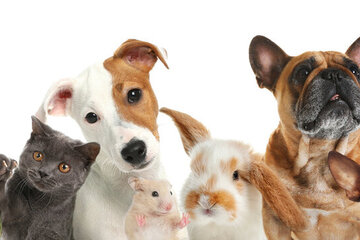

Why are my cholesterol numbers important? -- Additionally added and edited
Your cholesterol numbers are important because they help you know your risk for heart disease. Cholesterol is a type of lipid (fat) that helps your body perform many important functions. But too much cholesterol in your blood is bad for you. It can enter your artery wall, damage its integrity and lead to the formation of atherosclerotic plaque (hardened deposits).
This process of plaque buildup is called atherosclerosis. It can lead to serious problems like:
Coronary artery disease: Blocked blood flow to your heart.
Peripheral artery disease: Blocked blood flow to your legs and arms.
Carotid artery disease: Blocked blood flow to your brain.
Cholesterol travels through your blood silently. And it turns into plaque silently. Plaque buildup is like someone tip-toeing on carpet. You might not see or notice its presence for a long time. You may have no symptoms until you have a heart attack or stroke. At that point, the plaque is like high heels on a hardwood floor. And it’s already caused serious damage to your body.
You can live for many years with high cholesterol and not even know it. That’s why it’s essential to get your cholesterol numbers checked on a regular basis. If your cholesterol numbers are too high (hyperlipidemia), that’s a red flag for you and your healthcare provider. High cholesterol is a major risk factor for heart disease. But catching it early gives you a chance to make changes and get your cholesterol to a healthy level.
This process of plaque buildup is called atherosclerosis. It can lead to serious problems like:
Coronary artery disease: Blocked blood flow to your heart.
Peripheral artery disease: Blocked blood flow to your legs and arms.
Carotid artery disease: Blocked blood flow to your brain.
Cholesterol travels through your blood silently. And it turns into plaque silently. Plaque buildup is like someone tip-toeing on carpet. You might not see or notice its presence for a long time. You may have no symptoms until you have a heart attack or stroke. At that point, the plaque is like high heels on a hardwood floor. And it’s already caused serious damage to your body.
You can live for many years with high cholesterol and not even know it. That’s why it’s essential to get your cholesterol numbers checked on a regular basis. If your cholesterol numbers are too high (hyperlipidemia), that’s a red flag for you and your healthcare provider. High cholesterol is a major risk factor for heart disease. But catching it early gives you a chance to make changes and get your cholesterol to a healthy level.
Authored by: Vijaya
Navigating Context
Posted on: Introduce Books, St...


Books play a vital role in both brain development and language skills. ---- Edited
Introduce Books, Storytelling And Narration --- EditedBooks play a vital role in both brain development and language skills. They’re also the first step towards gross motor skill development (holding books, turning pages). I had introduced cloth books & soft sponge books to her when she was two months old, board books from five months, and paper books after she turned a year old. She liked colourful objects, animals, birds & shapes till around nine months and then loved listening to simple short stories from illustrated books (no fairy tales). And activity books (match the shadows, pairing similar objects) after she turned 2.3. Ask Questions To Stimulate The Thinking ProcessAs I introduced the books, I named the objects she was seeing in all the languages I knew. Then I gradually started describing them (shape, colour, use). I explained the environment in which they are found and constantly asked her questions. For example, pointing at a rabbit, instead of asking “what is this?” I asked her, “it has long ears, a short fluffy tail, is soft & white like cotton. What is it?”. I continued with the exercise even when we went out to some shop or mall. We played the “I spy” game in the house & outdoors. I would describe objects and ask her to identify them. It was fun.4. Let Your Kids Explore - Touch, Feel, Smell, TasteI encouraged the natural tendency that kids have to explore the world around them. (But of course, with discretion). I never stopped her from playing with stones or mud in the garden, things like tasting sour lime or bitter gourd, smell a flower on the plant, etc. She learned by herself that stones were hard, mud was soft, ice was cold, the paper could be torn with hands and rubber bands were elastic & so on. Things that were not safe for her we explained to her & kept out of reach- like touching a hot cup of tea could burn her skin, pressing against a glass door could break the glass, playing with a sharp object could hurt, etc.
Name
Role
Chathuri
Project Manager
Rohit
Developer
Vijaya
QA
Name
Role
Chathuri
Project Manager
Rohit
Developer
Vijaya
QA
Posted by: Venturit Super Admin
Disciplinary Content
Posted on: Smoke test group by...


Edited: Natural disasters can have devastating consequences, including: Loss of life and injury:
Natural disasters can have devastating consequences, including:
Loss of life and injury:
Human casualties are a tragic outcome of many natural disasters.
Property damage:
Buildings, infrastructure, and personal belongings can be destroyed or damaged.
Economic disruption:
Disasters can disrupt local economies, causing significant financial losses.
Environmental damage:
Natural disasters can lead to habitat destruction, pollution, and other environmental problems.
Importance of Preparedness:
While natural disasters are inevitable, being prepared can significantly reduce their impact:
Early warning systems: Timely warnings allow communities to evacuate and take necessary precautions.
Building codes and regulations: Stronger infrastructure can better withstand natural hazards.
Community awareness and education: Educating the public about disaster preparedness is crucial.
Emergency response plans: Having well-defined plans for responding to disasters can save lives and minimize damage.
Loss of life and injury:
Human casualties are a tragic outcome of many natural disasters.
Property damage:
Buildings, infrastructure, and personal belongings can be destroyed or damaged.
Economic disruption:
Disasters can disrupt local economies, causing significant financial losses.
Environmental damage:
Natural disasters can lead to habitat destruction, pollution, and other environmental problems.
Importance of Preparedness:
While natural disasters are inevitable, being prepared can significantly reduce their impact:
Early warning systems: Timely warnings allow communities to evacuate and take necessary precautions.
Building codes and regulations: Stronger infrastructure can better withstand natural hazards.
Community awareness and education: Educating the public about disaster preparedness is crucial.
Emergency response plans: Having well-defined plans for responding to disasters can save lives and minimize damage.
Posted by: Scarlet Ethan Edien
Navigating Context
Posted on: #iteachmsu


Smoke test article, What is causing my back pain, and how can I remedy it? -- edited
Common causesTrusted Source of back pain include:
Strains and sprains
Strains are injuries to muscles or tendons, while sprains affect the ligaments. Examples of movements that could lead to one of these injuries include:
pushing, pulling, lifting, or carrying something
bending over
twisting the spine abruptly
coughing or sneezing
Other types of injury that can causeTrusted Source back pain include whiplash and fractures.
Learn the difference between a sprain and a strain.
Posture
Posture refers to how a person holds themselves when sitting or standing. Over time, some postures can leadTrusted Source to pain.
Examples of postures that may eventually cause pain include:
forward head posture, which is when the head juts forward over the spine
slouching, which involves sitting or standing with rounded shoulders
hyperlordosis, which is when the hips tilt forward, arching the lower back
Everyday activities can also mean a person adopts an unhealthy posture for prolonged periods. Examples include:
driving
using a laptop or computer that is too low down
sitting in chairs or on couches that do not support the back
sleeping on an unsupportive mattress
Learn more about different types of posture.
Structural problems
Some structural problems of the spine may also result in back pain. These can includeTrusted Source:
Ruptured disks: Disks cushion each vertebra in the spine. If the disk ruptures, it exerts more pressure on a nerve, resulting in back pain. Sometimes, this pain may travel through the buttock and down the back of a leg. This is known as sciatica.
Bulging disks: Similarly, a disk that bulges from its place between the bones can put pressure on a nerve. Sometimes, this may also result in sciatica.
Arthritis: Osteoarthritis can cause problems with the joints in the hips, lower back, and other areas of the body. Sometimes, the space around the spinal cord narrows. Health experts call this spinal stenosis.
Osteoporosis: This causes the bones to become brittle and porous. When this leads to fractures, osteoporosis may cause back pain.
Curvature of the spine: Back pain can occur if the spine curves too much. An example is scoliosis, in which the spine curves to the side.
Other causes
Other factors that may lead to back pain include:
kidney stones
menstrual cramps
endometriosis
pregnancy
infections of the spine, bladder, kidneys, or reproductive system
shingles, which lies dormant in nerves and can reactivate, causing a painful rash along the nerve path
cauda equina syndrome
cancer of the spine
Strains and sprains
Strains are injuries to muscles or tendons, while sprains affect the ligaments. Examples of movements that could lead to one of these injuries include:
pushing, pulling, lifting, or carrying something
bending over
twisting the spine abruptly
coughing or sneezing
Other types of injury that can causeTrusted Source back pain include whiplash and fractures.
Learn the difference between a sprain and a strain.
Posture
Posture refers to how a person holds themselves when sitting or standing. Over time, some postures can leadTrusted Source to pain.
Examples of postures that may eventually cause pain include:
forward head posture, which is when the head juts forward over the spine
slouching, which involves sitting or standing with rounded shoulders
hyperlordosis, which is when the hips tilt forward, arching the lower back
Everyday activities can also mean a person adopts an unhealthy posture for prolonged periods. Examples include:
driving
using a laptop or computer that is too low down
sitting in chairs or on couches that do not support the back
sleeping on an unsupportive mattress
Learn more about different types of posture.
Structural problems
Some structural problems of the spine may also result in back pain. These can includeTrusted Source:
Ruptured disks: Disks cushion each vertebra in the spine. If the disk ruptures, it exerts more pressure on a nerve, resulting in back pain. Sometimes, this pain may travel through the buttock and down the back of a leg. This is known as sciatica.
Bulging disks: Similarly, a disk that bulges from its place between the bones can put pressure on a nerve. Sometimes, this may also result in sciatica.
Arthritis: Osteoarthritis can cause problems with the joints in the hips, lower back, and other areas of the body. Sometimes, the space around the spinal cord narrows. Health experts call this spinal stenosis.
Osteoporosis: This causes the bones to become brittle and porous. When this leads to fractures, osteoporosis may cause back pain.
Curvature of the spine: Back pain can occur if the spine curves too much. An example is scoliosis, in which the spine curves to the side.
Other causes
Other factors that may lead to back pain include:
kidney stones
menstrual cramps
endometriosis
pregnancy
infections of the spine, bladder, kidneys, or reproductive system
shingles, which lies dormant in nerves and can reactivate, causing a painful rash along the nerve path
cauda equina syndrome
cancer of the spine
Authored by: Shravya
Assessing Learning
Posted on: Management is the p...

Companies and organisations need effective management to achieve business goals. There are different levels of management that aim to organise and coordinate the business functions of a company. If you're interested in becoming a manager, knowing about what a manager does can help you get an idea about the role. In this article, we discuss what management is and its unique characteristics, objectives, levels and functions.
Posted by: Swara mhetre
Pedagogical Design
Posted on: Management is the p...
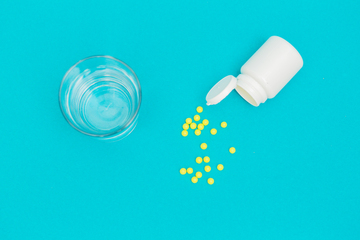

Companies and organisations need effective management to achieve business goals. There are different levels of management that aim to organise and coordinate the business functions of a company. If you're interested in becoming a manager, knowing about what a manager does can help you get an idea about the role. In this article, we discuss what management is and its unique characteristics, objectives, levels and functions. --- edited
Posted by: Scarlet Ethan Edien
Pedagogical Design
Posted on: Introduce Books, St...

Introduce Books, Storytelling And Narration -- Edited
Books play a vital role in both brain development and language skills. They’re also the first step towards gross motor skill development (holding books, turning pages). I had introduced cloth books & soft sponge books to her when she was two months old, board books from five months, and paper books after she turned a year old. She liked colourful objects, animals, birds & shapes till around nine months and then loved listening to simple short stories from illustrated books (no fairy tales). And activity books (match the shadows, pairing similar objects) after she turned 2.
3. Ask Questions To Stimulate The Thinking Process
As I introduced the books, I named the objects she was seeing in all the languages I knew. Then I gradually started describing them (shape, colour, use). I explained the environment in which they are found and constantly asked her questions. For example, pointing at a rabbit, instead of asking “what is this?” I asked her, “it has long ears, a short fluffy tail, is soft & white like cotton. What is it?”. I continued with the exercise even when we went out to some shop or mall. We played the “I spy” game in the house & outdoors. I would describe objects and ask her to identify them. It was fun.
4. Let Your Kids Explore - Touch, Feel, Smell, Taste
I encouraged the natural tendency that kids have to explore the world around them. (But of course, with discretion). I never stopped her from playing with stones or mud in the garden, things like tasting sour lime or bitter gourd, smell a flower on the plant, etc. She learned by herself that stones were hard, mud was soft, ice was cold, the paper could be torn with hands and rubber bands were elastic & so on. Things that were not safe for her we explained to her & kept out of reach- like touching a hot cup of tea could burn her skin, pressing against a glass door could break the glass, playing with a sharp object could hurt, etc.
5. Music-Dance-Physical Activity
Kids love music & I was not surprised the other day when she sang the whole song “lakdi ki kathi, kathi pe ghoda” and danced to the tune as well. She now sings quite a few songs & rhymes. It seems like she has a good ear for music because she has been listening to it since childhood. I also noticed that a soothing instrumental piece calms her down whereas a song like “lungi dance” excites her. So, dance becomes an excellent physical activity to channelise the never-ending energy of a kid, and singing & listening to songs becomes a great mental activity. ---- Edited
Books play a vital role in both brain development and language skills. They’re also the first step towards gross motor skill development (holding books, turning pages). I had introduced cloth books & soft sponge books to her when she was two months old, board books from five months, and paper books after she turned a year old. She liked colourful objects, animals, birds & shapes till around nine months and then loved listening to simple short stories from illustrated books (no fairy tales). And activity books (match the shadows, pairing similar objects) after she turned 2.
3. Ask Questions To Stimulate The Thinking Process
As I introduced the books, I named the objects she was seeing in all the languages I knew. Then I gradually started describing them (shape, colour, use). I explained the environment in which they are found and constantly asked her questions. For example, pointing at a rabbit, instead of asking “what is this?” I asked her, “it has long ears, a short fluffy tail, is soft & white like cotton. What is it?”. I continued with the exercise even when we went out to some shop or mall. We played the “I spy” game in the house & outdoors. I would describe objects and ask her to identify them. It was fun.
4. Let Your Kids Explore - Touch, Feel, Smell, Taste
I encouraged the natural tendency that kids have to explore the world around them. (But of course, with discretion). I never stopped her from playing with stones or mud in the garden, things like tasting sour lime or bitter gourd, smell a flower on the plant, etc. She learned by herself that stones were hard, mud was soft, ice was cold, the paper could be torn with hands and rubber bands were elastic & so on. Things that were not safe for her we explained to her & kept out of reach- like touching a hot cup of tea could burn her skin, pressing against a glass door could break the glass, playing with a sharp object could hurt, etc.
5. Music-Dance-Physical Activity
Kids love music & I was not surprised the other day when she sang the whole song “lakdi ki kathi, kathi pe ghoda” and danced to the tune as well. She now sings quite a few songs & rhymes. It seems like she has a good ear for music because she has been listening to it since childhood. I also noticed that a soothing instrumental piece calms her down whereas a song like “lungi dance” excites her. So, dance becomes an excellent physical activity to channelise the never-ending energy of a kid, and singing & listening to songs becomes a great mental activity. ---- Edited
Posted by: Venturit Super Admin
Disciplinary Content
Posted on: Smoke test group by...


Edited: Natural disasters can have devastating consequences, including:
Loss of life and injury:
Human casualties are a tragic outcome of many natural disasters.
Property damage:
Buildings, infrastructure, and personal belongings can be destroyed or damaged.
Economic disruption:
Disasters can disrupt local economies, causing significant financial losses.
Environmental damage:
Natural disasters can lead to habitat destruction, pollution, and other environmental problems.
Importance of Preparedness:
While natural disasters are inevitable, being prepared can significantly reduce their impact:
Early warning systems: Timely warnings allow communities to evacuate and take necessary precautions.
Building codes and regulations: Stronger infrastructure can better withstand natural hazards.
Community awareness and education: Educating the public about disaster preparedness is crucial.
Emergency response plans: Having well-defined plans for responding to disasters can save lives and minimize damage.
Loss of life and injury:
Human casualties are a tragic outcome of many natural disasters.
Property damage:
Buildings, infrastructure, and personal belongings can be destroyed or damaged.
Economic disruption:
Disasters can disrupt local economies, causing significant financial losses.
Environmental damage:
Natural disasters can lead to habitat destruction, pollution, and other environmental problems.
Importance of Preparedness:
While natural disasters are inevitable, being prepared can significantly reduce their impact:
Early warning systems: Timely warnings allow communities to evacuate and take necessary precautions.
Building codes and regulations: Stronger infrastructure can better withstand natural hazards.
Community awareness and education: Educating the public about disaster preparedness is crucial.
Emergency response plans: Having well-defined plans for responding to disasters can save lives and minimize damage.
Posted by: Scarlet Ethan Edien
Justice and Belonging
Posted on: Edited -- The Compl...
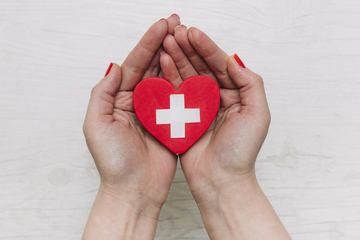

Want to achieve something similar? Read on to find out how to lose fat and gain muscle.
The Build Muscle Training Plans
In these plans, you'll alternate weeks between doing a combination of heavy weights and low repetitions and low weights with high repetitions to build muscle. This strategy delivers both endurance, strength and hypertrophy. Combine these efforts with intelligent nutrition, and you'll expose your body to the variables you need to hit your seemingly contradictory goals and realise the overall objective: looking and feeling your absolute best. You can use our guide to RPE to decide when to increase your weights:
The Build Muscle Training Plans
In these plans, you'll alternate weeks between doing a combination of heavy weights and low repetitions and low weights with high repetitions to build muscle. This strategy delivers both endurance, strength and hypertrophy. Combine these efforts with intelligent nutrition, and you'll expose your body to the variables you need to hit your seemingly contradictory goals and realise the overall objective: looking and feeling your absolute best. You can use our guide to RPE to decide when to increase your weights:
Posted by: Scarlet Ethan Edien
Assessing Learning
Posted on: #iteachmsu


The IoT-Based Smart Farming Cycle
The core of IoT is the data you can draw from things and transmit over the internet. To optimize the farming process, IoT devices installed on a farm should collect and process data in a repetitive cycle that enables farmers to react quickly to emerging issues and changes in ambient conditions. Smart farming follows a cycle similar to this one:
1. Observation . Sensors record observational data from the crops, livestock, soil, or atmosphere.
2. Diagnostics. The sensor values are fed to a cloud-hosted IoT platform with predefined decision rules and models—also called "business logic"—that ascertain the condition of the examined object and identify any deficiencies or needs.
3. Decisions . The user and/or the machine learning-driven components of the IoT platform assess the revealed issues to decide if location-specific treatment is necessary.
4. Action . After end-user evaluation and action, the cycle repeats from the beginning.
The core of IoT is the data you can draw from things and transmit over the internet. To optimize the farming process, IoT devices installed on a farm should collect and process data in a repetitive cycle that enables farmers to react quickly to emerging issues and changes in ambient conditions. Smart farming follows a cycle similar to this one:
1. Observation . Sensors record observational data from the crops, livestock, soil, or atmosphere.
2. Diagnostics. The sensor values are fed to a cloud-hosted IoT platform with predefined decision rules and models—also called "business logic"—that ascertain the condition of the examined object and identify any deficiencies or needs.
3. Decisions . The user and/or the machine learning-driven components of the IoT platform assess the revealed issues to decide if location-specific treatment is necessary.
4. Action . After end-user evaluation and action, the cycle repeats from the beginning.
Posted by: Scarlet Ethan Edien
Disciplinary Content
Posted on: Smoke test group : ...

The IoT-Based Smart Farming Cycle
The core of IoT is the data you can draw from things and transmit over the internet. To optimize the farming process, IoT devices installed on a farm should collect and process data in a repetitive cycle that enables farmers to react quickly to emerging issues and changes in ambient conditions. Smart farming follows a cycle similar to this one:
1. Observation . Sensors record observational data from the crops, livestock, soil, or atmosphere.
2. Diagnostics. The sensor values are fed to a cloud-hosted IoT platform with predefined decision rules and models—also called "business logic"—that ascertain the condition of the examined object and identify any deficiencies or needs.
3. Decisions . The user and/or the machine learning-driven components of the IoT platform assess the revealed issues to decide if location-specific treatment is necessary.
4. Action . After end-user evaluation and action, the cycle repeats from the beginning.
The core of IoT is the data you can draw from things and transmit over the internet. To optimize the farming process, IoT devices installed on a farm should collect and process data in a repetitive cycle that enables farmers to react quickly to emerging issues and changes in ambient conditions. Smart farming follows a cycle similar to this one:
1. Observation . Sensors record observational data from the crops, livestock, soil, or atmosphere.
2. Diagnostics. The sensor values are fed to a cloud-hosted IoT platform with predefined decision rules and models—also called "business logic"—that ascertain the condition of the examined object and identify any deficiencies or needs.
3. Decisions . The user and/or the machine learning-driven components of the IoT platform assess the revealed issues to decide if location-specific treatment is necessary.
4. Action . After end-user evaluation and action, the cycle repeats from the beginning.
Posted by: Swara mhetre
Posted on: #iteachmsu


Natural resources are the raw materials and sources of energy that we use. Petrol, metals, soil, sand, wind, water, and everything in between are natural resources. Manufactured items such as plastic, sheet metal, fabrics, microchips, electricity and concrete are not natural resources, but are most definitely derived from natural resources.
Natural resources are the raw materials and sources of energy that we use.
Petrol, metals, soil, sand, wind, water and everything in between are natural resources. Manufactured items such as plastic, sheet metal, fabrics, microchips, electricity and concrete are not natural resources, but are most definitely derived from natural resources.
Think about the relationship between natural resources and manufactured products. In essence, we call them “natural” resources because they are things human society uses that are created (or were created in the case of fossil fuels) without human intervention.
Perpetually Renewable Resources
Perpetually renewable resources are the easiest resources to understand; these are natural resources that are constantly replenished by the Sun’s and Earth’s natural processes. For example, every day the sun delivers an average of 198 Watts of energy to every square meter (m
) of the Earth’s surface. For comparison a standard incandescent light bulb in a bedside lamp uses 40 Watts, or a 100kg person climbing a step in 2 seconds uses roughly 200 Watts. Every day without fail for the last 5 billion years (plus or minus a few hundred million years) the Sun has delivered this solar energy.
Together with geothermal energy (heat from the Earth’s interior), the Sun’s perpetual energy powers the winds, ocean currents, precipitation and most of the Earth’s plant life. Solar and geothermal natural resources currently energise a significant and growing percentage of many nations’ electrical grids. It is perpetually renewable in the sense that no matter how much we use in terms of human time-scales (e.g decades to millennia), the Sun and the Earth will always make more.
Intermediate Renewable Resources
Intermediate renewable resources are only renewable resources if we don’t use them too quickly. They are resources such as freshwater, soil, crops and trees for timber. If we didn’t use them, they would be perpetually renewable, but because they require time (on human time-scales) to regenerate or grow, we can overuse them until they are no longer available.
Freshwater is a great example of an intermediate renewable resource. Through the water cycle, the sun evaporates water from the surface of saltwater oceans that travels over land and falls back to earth as freshwater rain. This rain fills the lakes, rivers and aquifers we use for agriculture, industry and drinking water. If we use this freshwater at the same rate as the rain recharging it, then we won’t run out. If we use the freshwater faster than it recharges, then we will. Intermediate renewable resources must be carefully managed to ensure they are not depleted.
Non-renewable Resources
The last category of natural resources are the non-renewables. These are resources that will not regenerate on human time-scales. Once they have been depleted they will no longer be available and no more will be made. The most common examples of non-renewable resources are fossil fuels, so-called because most were created by processes that take millions of years. Fossil fuels include crude oil, natural gas, coal and uranium. Other non-renewable resources include metals, lithium and rare-Earth elements (REE’s), but it’s important to remember that while we may eventually run out of mineable metals and REE’s, with careful waste management, these can be recovered through recycling. However, it is not the same for fossil fuels as using them for energy alters their chemistry so they are no longer useful.
Natural resources are the raw materials and sources of energy that we use.
Petrol, metals, soil, sand, wind, water and everything in between are natural resources. Manufactured items such as plastic, sheet metal, fabrics, microchips, electricity and concrete are not natural resources, but are most definitely derived from natural resources.
Think about the relationship between natural resources and manufactured products. In essence, we call them “natural” resources because they are things human society uses that are created (or were created in the case of fossil fuels) without human intervention.
Perpetually Renewable Resources
Perpetually renewable resources are the easiest resources to understand; these are natural resources that are constantly replenished by the Sun’s and Earth’s natural processes. For example, every day the sun delivers an average of 198 Watts of energy to every square meter (m
) of the Earth’s surface. For comparison a standard incandescent light bulb in a bedside lamp uses 40 Watts, or a 100kg person climbing a step in 2 seconds uses roughly 200 Watts. Every day without fail for the last 5 billion years (plus or minus a few hundred million years) the Sun has delivered this solar energy.
Together with geothermal energy (heat from the Earth’s interior), the Sun’s perpetual energy powers the winds, ocean currents, precipitation and most of the Earth’s plant life. Solar and geothermal natural resources currently energise a significant and growing percentage of many nations’ electrical grids. It is perpetually renewable in the sense that no matter how much we use in terms of human time-scales (e.g decades to millennia), the Sun and the Earth will always make more.
Intermediate Renewable Resources
Intermediate renewable resources are only renewable resources if we don’t use them too quickly. They are resources such as freshwater, soil, crops and trees for timber. If we didn’t use them, they would be perpetually renewable, but because they require time (on human time-scales) to regenerate or grow, we can overuse them until they are no longer available.
Freshwater is a great example of an intermediate renewable resource. Through the water cycle, the sun evaporates water from the surface of saltwater oceans that travels over land and falls back to earth as freshwater rain. This rain fills the lakes, rivers and aquifers we use for agriculture, industry and drinking water. If we use this freshwater at the same rate as the rain recharging it, then we won’t run out. If we use the freshwater faster than it recharges, then we will. Intermediate renewable resources must be carefully managed to ensure they are not depleted.
Non-renewable Resources
The last category of natural resources are the non-renewables. These are resources that will not regenerate on human time-scales. Once they have been depleted they will no longer be available and no more will be made. The most common examples of non-renewable resources are fossil fuels, so-called because most were created by processes that take millions of years. Fossil fuels include crude oil, natural gas, coal and uranium. Other non-renewable resources include metals, lithium and rare-Earth elements (REE’s), but it’s important to remember that while we may eventually run out of mineable metals and REE’s, with careful waste management, these can be recovered through recycling. However, it is not the same for fossil fuels as using them for energy alters their chemistry so they are no longer useful.
Posted by: Venturit Super Admin
Disciplinary Content
Host: MSU Libraries

MSU Libraries and The Poetry Room present Olivia Gatwood
Join the MSU Libraries and Lansing’s The Poetry Room for an afternoon of poetry, connection and conversation celebrating student, alumni and community voices. The event opens with performances from the MSU Poetry Club alongside recent alumni, spotlighting emerging talent and the power of being heard. The showcase will be followed by acclaimed poet, author and viral sensation Olivia Gatwood, whose work blends humor, intimacy and sharp social insight. Gatwood will share poems as well as excerpts from her 2024 novel “Whoever You Are, Honey,” offering an unfiltered look into her craft and creative journey. The afternoon will conclude with a Q&A — a mix of moderated conversation and audience participation — creating a rare opportunity to connect with one of today’s most dynamic literary voices.
Olivia Gatwood is the author of two poetry collections, “New American Best Friend” and “Life of the Party,” and co-writer of Adele’s music video “I Drink Wine.” She has received international recognition for her poetry, writing workshops and work as a Title IX-compliant educator in sexual assault prevention and recovery. Her performances have been featured on HBO, MTV, VH1, the BBC and more, with poems appearing in “The Poetry Foundation,” “Lambda Literary” and “The Missouri Review.” Originally from Albuquerque, she now lives in Los Angeles.
Event is free and open to all.
Navigating Context
Host: MSU Libraries

Data Management Plans: Yes, you need one and here is how to create them
An overview of why data management plans are important and often required, and how to develop one. We will look at the items commonly included in all data management plans regardless of agency/institutional requirements, some examples of specific funding agency templates and review what resources are available to help you draft your plan.
Navigating Context
Host: MSU Libraries

Intro to 360 Cameras, 3D Scanners, & Other Digitization Equipment @ DSL: Drop-in Session
Immersive data is everywhere. It's in every digital asset you see in a video game, a YouTube 360 video and the panoramic pictures you take with your mobile device. Drop in to learn about how 360 cameras, 3D scanners and our digitization equipment is used to create these new experiences and apply them to your research, assignments and presentations.
Navigating Context


